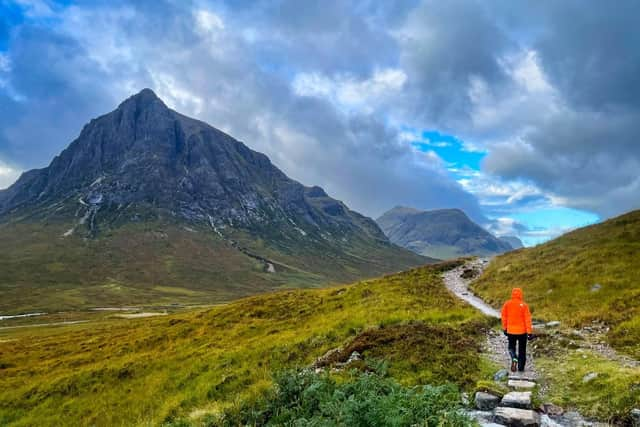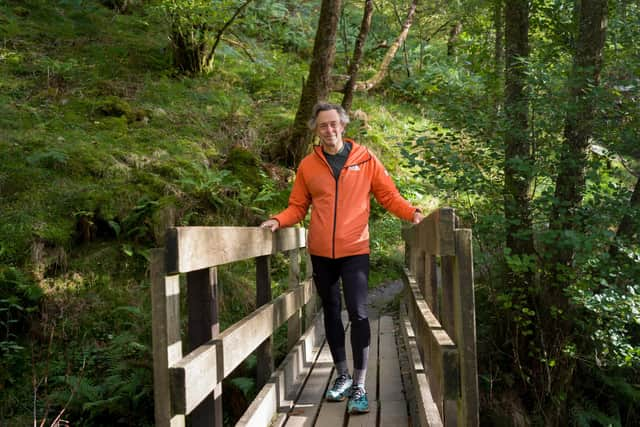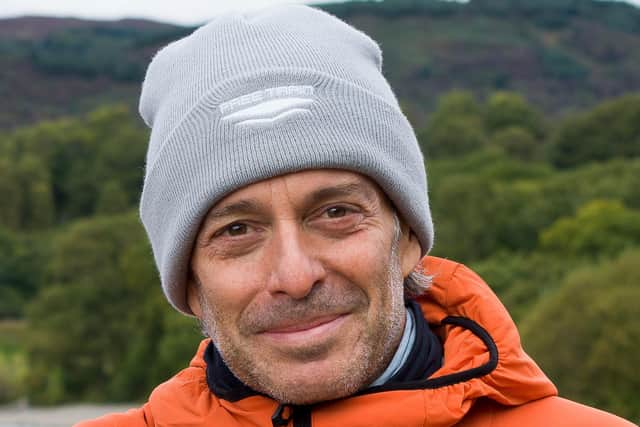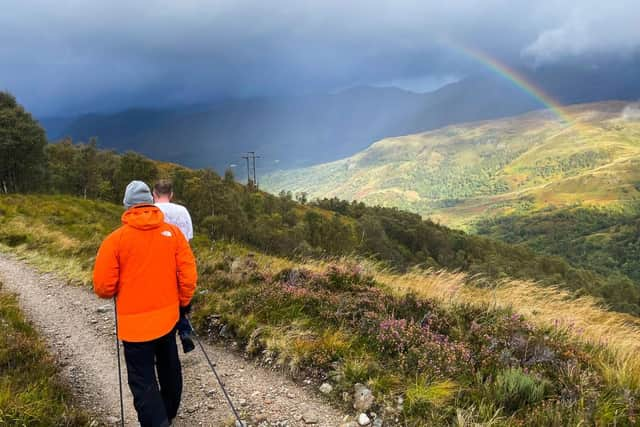Why a ‘privileged white man’ and former Coca-Cola executive is walking the West Highland Way – and then round the world
He has been battered by wind, lashed with rain and warmed by the sun – and that was all in just 24 hours – during the 96-mile trek.
He has climbed up hills, passed by lochs and crossed rivers, spotting creatures such as otters, owls and eagles on the five-day journey.
Advertisement
Hide AdAdvertisement
Hide AdThe 59-year-old is here because he has reached a turning point.
Not just on this scenic path, but also in his life.
Cohon is a wealthy man, a former Coca-Cola executive who nowadays lives in a houseboat on the River Thames in London.
He has enjoyed a jet-setting Baby Boomer lifestyle, clocking up millions of miles in international travel, consuming thousands of tonnes of meat and throwing away countless items made from plastic.
But now, after becoming the first individual in the world to have their personal lifetime impact on the environment calculated, he has launched a mission to reimburse the planet and live out the rest of his days carbon-neutral.


“I am a privileged white male who has had a great business career,” he said.
“I am guilty, but I am not to blame.
“So I’m taking action to do as much as I can to redeem at least a little bit of the carbon I have put into the atmosphere since I was born in 1963.”


He describes himself as “a planet destroying, fossil fuel dinosaur”, but stresses his intention “to do something about it”.
Firstly Cohon has invested his entire $1 million [£890,000] pension fund in a portfolio of carbon-removal schemes, including kelp planting, mineralisation, direct air capture and sequestration in concrete.
Advertisement
Hide AdAdvertisement
Hide AdNext he is set to embark on a marathon 2,800-mile trek from London to Istanbul early next year, the first leg of his multi-year, round-the-world Walk It Back campaign.
He describes Walk It Back as both a fact-finding mission and outreach initiative, with the aim of increasing awareness of the climate crisis and raising cash for environmental projects.


Cohon’s Scottish adventure was a training exercise, helping him break in his boots and limber up for the big challenge that begins on January 2.
He spoke to The Scotsman as he approached Glencoe.
“I’m on a hill,” he said.
“Is it raining? It’s absolutely teeming down.
“There has been wind, thunder and lightning – it’s wonderful.”
So why did he choose Scotland as a training ground?


“First off, it’s a beautiful part of the world,” he said.
“Number two, the Scots are pristine about their nature and so I wanted to understand that – why it’s so important to Scotland as a nation.
“This walk gives me an idea of what the Istanbul journey will be like. And the weather is just beautiful.
“The rain is really coming down, so it’s very wet underfoot.
“But that’s good for the peat bogs.
“If you can make it in Scotland, you can make it anywhere.”
Cohon admitted he was shaken to discover the level of carbon emissions he had created over his lifetime – 8,147 tonnes, which is 28 times the global average.
Advertisement
Hide AdAdvertisement
Hide AdHe said: “All the carbon we have put up there is still up there and off-setting is a transition solution that will only get us so far.
“We need to start acting now to vastly scale up new tech and nature-based solutions to take away the huge amounts of carbon we as a human race have released.
“Walk it Back aims to highlight that – starting with a week’s training in Scotland, where we have seen some of the wonderful nature-based work to remove the carbon in our atmosphere.
“I was shocked to discover how much I am personally responsible for and wanted to do what I could to start to reverse, remove, rewind and redeem.”
Along the way he has hooked up with a number of people, including 18-year-old climate and social justice activist Theresa Rose Sebastian, co-founder of the international youth organisation Re-Earth Initiative – a partner in the Walk It Back project.
She joined him for part of the route.
“Carbon removal is necessary for us to truly achieve carbon neutrality in time for a just, sustainable and equitable world,” she said.
“The truth is that even with mitigation efforts to minimise, and literally stop, our carbon emissions in the world, the carbon we have already produced has done a lot of harm.
“We need to take action on the carbon that is already up there to give current and future generations a true chance in making the world a liveable place.”
Advertisement
Hide AdAdvertisement
Hide AdAnother was Simon Jones, director of environment at Loch Lomond and the Trossachs National Park Authority, who explained some of the carbon-removal projects under way in the area surrounding the West Highland Way.
He said: “Nature-based solutions such as peatland restoration and woodland expansion are important ways in which the national park is playing its part in Scotland’s journey to net zero.
“For carbon removal, woodland expansion is a high priority as this gives us both more trees and more woodland soils – both of which trap and store carbon.
“We have set a target of 2,000 hectares of expanded woodland by 2023 and are working with land managers in the park and Scottish Forestry colleagues to make this happen.
“Around 36 per cent – 68,000 hectares – of land within the national park is covered by peatland, which is estimated to hold up to 20 million tonnes of carbon.
“Too much of this peatland is currently degraded, so that instead of soaking up carbon it is leaking carbon and other greenhouse gases back into the atmosphere.”
The park has set a target to restore 2,000 hectares of peat by 2023.
Comments
Want to join the conversation? Please or to comment on this article.
